NavSource Online: Submarine Photo Archive
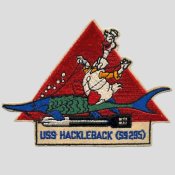
Patch contributed by Mike Smolinski
Please report any broken links or trouble you might come across to the Webmaster.
Please take a moment to let us know so that we can correct any problems and make your visit as enjoyable and as informative as possible.

| Click On Image For Full Size | Size | Image Description | Source | |
|---|---|---|---|---|
 | 672k | William Cramp & Sons Shipbuilding Company facilities, 15 March 1943. Cruisers visible in this photo: Far right - Miami (CL-89) - Furthest along; aft turrets and catapults in place.Left of Miami is Astoria (CL-90) - she is about a month behind Miami. Left of Astoria, in the large shipway, is Oklahoma City (CL-91) - a significant portion of hull has been built. Left of Oklahoma City is Little Rock (CL-92) - Keel was just been laid on 6 March, which is visible under crane structure. The coaling dock next to the cruisers site is known as grafitti pier" today. Note that there are also 2 ATF's: Seneca (ATF-91) and Nauset (ATF-89) fitting out on the right side near the graving dock being built which was never used when finished in 1945. It was fully functional, and used in the 50's when Keystone Ship Repair leased the property. Fast forward to 2014 when the last piece of the shipyard was demolished. The 'L' shaped building, across Girard Avenue which was the foundry & Machine Shop was the end. Note the 8 submarines in various stages of construction to the left of the Little Rock (4 per shipway). They are most likely from bottom right to left & bottom to top: The shipyard's submarine construction program was not especially successful. Poor management hindered the delivery of the boats. The first delivery was made two years after keel laying, and fitting out was then done by Portsmouth Navy Yard. The best construction time for a submarine was 644 days.
Cramp's submarine construction story was not a happy one for the Navy. Even though they got an early start on their Balaos, they had a lot of difficulty in hiring skilled workers and managers as most of the good ones already had jobs. Quality and timeliness suffered as a result. Cramp used the Government design plans, but used a completely different part numbering and inventory system, making coordination with Portsmouth, Boston, and Mare Island virtually impossible. The Government was forced to step in to straighten the mess out, with some of the boats ultimately being finished by other yards. |
Text courtesy of Tom Bateman, David Johnston (USN, retired) , Ron Reeves (of blessed memory), & Tracy White. USN photo # 80-G-38403 via Tom Bateman courtesy of Tracy White @Researcher @ Large. | |
 | 500k | Inverse of the above. | USN photo # 80-G-38404 via Tom Bateman courtesy of Tracy White @ Researcher @ Large. | |
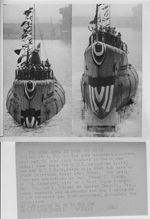 | 532k | Two More Subs to Sink the Axis. Philadelphia, Pennsylvania -- Two more undersea fighters went out to beat Axis U-Boats at their own deadly game when the Devilfish (SS-292), (left) and the Hackleback (SS-295), slid down the ways at Cramp Shipyards today. The Devilfish was christened by Mrs. Frank W. Fenno of Williamsport, wife of a Navy Cross winner. Mrs. William L. Wright of Corpus Christi, Texas, whose husband was decorated for the sinking of three Jap warships and five Merchantmen, sponsored the Hackleback. | Official USN photo from ACME, New York Bureau dated 5/30/43, courtesy of Bill Gonyo. | |
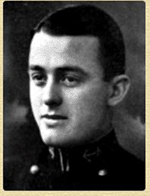 |
69k | Wright man for the job. Hackleback (SS-295) was sponsored by Mrs. W. L. Wright, wife of Lieutenant Commander William Leslie Wright, of Submarine Squadron 6. He commanded the Sturgeon (SS-187) for her first few patrols at the outbreak of WW II & received the Navy Cross for her 2nd & 3rd patrols. |
USN photo courtesy of valor.militarytimes.com | |
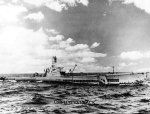 |
53k | Starboard view of the Hackleback (SS-295), underway, circa 1944, location unknown. | U.S. Navy photo, courtesy of ussubvetsofworldwarii. | |
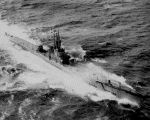 |
131k | Hackleback (SS-295) with a 5"/25 deck gun fore and aft, circa 1945. | USN photo. | |
 |
11k | Hackleback (SS-295), port side view underway, date and location unknown. | Courtesy of subnet.com. | |
 | 197k | Japanese merchant shipping had been decimated by the Pacific submarine fleet, and Hackleback (SS-295) was to encounter no suitable targets in any of her patrols. But on this first patrol, she played a key role in the sinking of the last of Japan's super-battleships, the Yamato. Patrolling the Bungo Suido area late in the night of 6 April, Hackleback made radar contact on a fast group of ships at about 25,000 yards. She sent a steady stream of location reports back to Pearl Harbor, at the same time attempting to close the task group. Hackleback three times came to within 13,000 yards of the Yamato force, but destroyers forced her out of range before she could get in position to fire torpedoes. Yamato was not to escape, however. The following morning, 7 April, planes from Admiral Mitscher's famous TF 58, guided by Hackleback's contact location reports, struck the Yamato group. In four successive waves, the carrier planes accounted for the destruction of Yamato, the light cruiser Yahagi, and four destroyers. | Text courtesy of DANFS. Drawing by Takeshi Yuki scanned from "Color Paintings of Japanese Warships", courtesy of combinedfleet.com. |
|
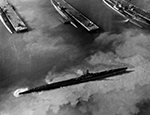 |
1.22k | U.S. submarine leaving Midway Island on war patrol. Note other submarines at the docks, May 1945. Returning to Midway 26 April, Hackleback (SS-295) prepared for a second patrol and on 21 May sailed. Among the submarines at Midway at the time of this photo is the Sea Poacher (SS-406). (somewhere there). |
Partial text courtesy of DANFS. Photo i.d. courtesy of Robert Morgan. USN photo # 80-G-468353, photographed by Lieutenant Commander Horace Brisol, now in the collections of the National Archives via National Museum of the U.S. Navy via flickr.com. |
|
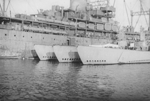 | 197k | The submarine tender Griffin (AS-13), at Midway with three of her charges between 26 August and 1 September 1945 The three boats are not identified, but boats at Midway at that time included Piranha (SS-389), Lionfish (SS-298), Moray (SS-300), Devilfish (SS-292),and Hackleback (SS-295). The outboard boat is an EB boat, but none of the above boats are EB boats, all Cramp or Portsmouth-built, so they are unidentified for now. | USN photo from the collection of Benton E. Buell, CWO 4,USN, courtesy of David Buell. | |
 | 137k | Reserve fleet at Mare Island, circa January 1946. There are 52 submarines and 4 Sub Tenders in this photo. This photo is a Berthing list identifying the ships in the picture. | Photo commemorating 50 years, U. S. Submarine Veterans of WW II 1996 calendar, courtesy of Darryl L. Baker. | |
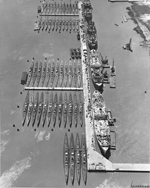 | 2.80k | Photo of the Reserve fleet at Mare Island, circa January 1946. There are 52 submarines and 4 Sub Tenders in this photo. Whether coincidental or on purpose, the number of boats in the photo is the same as that which were lost in WW II. From back to front and left to right, first group of 12 boats: Sand Lance (SS-381) Tunny (SS-282) Aspro (SS-309) Lionfish (SS-298) Guvania (SS-362) Sunfish (SS-281) Macabi (SS-375) Gurnard (SS-254) Pampanito (SS-383) Mingo (SS-261) Guitarro (SS-363) Bashaw (SS-241) From back to front and left to right, second group of 12 boats: Sealion (SS-315) Hammerhead (SS-364) Bream (SS-243) Seahorse (SS-304) Tinosa (SS-283) Pintado (SS-387) Mapiro (SS-376) Pipefish (SS-388) Moray (SS-300) Batfish (SS-310) Hackleback (SS-295) Bluegill (SS-242) From back to front and left to right, third group of 12 boats: Hawkbill (SS-366) Menhaden (SS-377) Perch (SS-313) Loggerhead (SS-374) Barbero (SS-317) Baya (SS-318) Hardhead (SS-365) Spadefish (SS-411) Springer (SS-414) Devilfish (SS-292) Kraken (SS-370) Dragonet (SS-293) From back to front and left to right, fourth group of 12 boats: Lamprey (SS-372) Piranha (SS-389) Manta (SS-299) Pargo (SS-264) Rancador (SS-301) Archerfish (SS-311) Mero (SS-378) Sawfish (SS-276) Spot (SS-413) Lizardfish (SS-373) Jallao (SS-368) Icefish (SS-367) From back to front and left to right, last group of 4 boats: Steelhead (SS-280) Puffer (SS-268) Stickleback (SS-415) Trepang (SS-412) From back to front, Submarine Tenders group of 4 ships: Pelias (AS-14) Aegir (AS-23) Euryale (AS-22) Griffin (AS-13) | Photo commemorating 50 years, U. S. Submarine Veterans of WW II 1996 calendar, courtesy of James P. Marion, III. | |
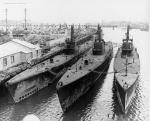 |
278k | Three veterans of Operation Crossroads are shown at Mare Island on 17 October 1946 in the Pacific Reserve Fleet. Left to right: Dentuda (SS-335), Searaven (SS-196) and Tuna (SS-203); Parche (SS-384) is aft of these three. Bluegill (SS-242) and Hackleback (SS-295) are to the left. | USN photo # 3618-46, courtesy of Darryl L. Baker. | |
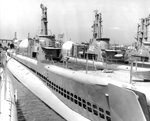 |
1.12k | Hackleback (SS-295), Trepang (SS-412) and Lizardfish (SS-373) in reserve at Mare Island in May 1953. | Photo courtesy of the files of the Vallejo Naval and Historical Museum, courtesy of Darryl L. Baker. | |
| Back To The Main Photo Index | Back To the Submarine Index |
|
Problems and site related matters, E-mail Webmaster |
|
This page was created and maintained by Michael Mohl All Pages © 1996 - 2025 NavSource History. All rights reserved.All rights reserved. |